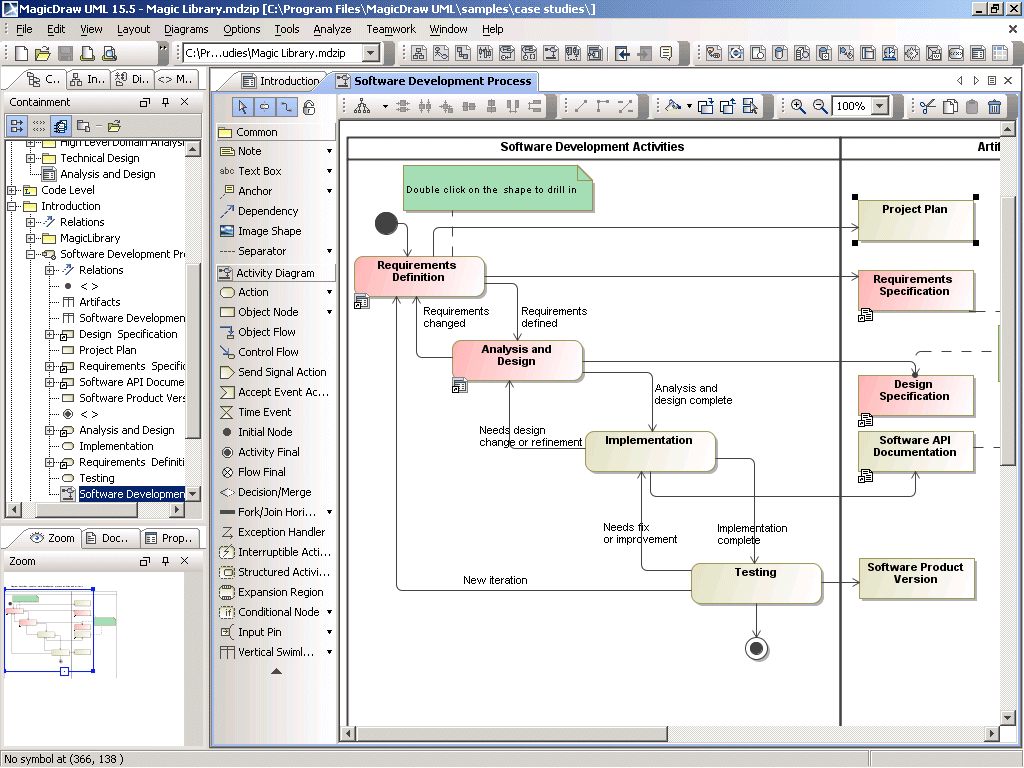MagicDraw UML
- Category
- Programming
- Java

- Developer: No Magic, Inc.
- Home page: www.magicdraw.com
- License type: Commercial
- Size: 117 MB
- Download
Review
MagicDraw provides full support for UML 2.0 metamodel, including class, use case, communication, sequence, state, activity, implementation, package, component, composite structure, and deployment diagrams. In addition, MagicDraw provides explicit support for UML profiles and custom diagrams. MagicDraw provides a means for architectural view modeling: to define system and software architecture in all 4+1 views, and at different abstraction levels. MagicDraw automatically generates your model parts in accordance with established design patterns: GoF, Java, EJB, JUnit, XML Schema, WSDL, CORBA IDL, and any of your customizable patterns. With MagicDraw’s visualization and analysis wizards, you can easily import an UML model from any source –XMI import or a reverse engineering operation – and visually display it. Support for integrated modeling. With a few simple clicks, create an integrated development environment by meshing MagicDraw with Eclipse, IBM's WebSphere Application Developer and Rational Application Developer, Borland’s JBuilder, IntelliJ IDEA, NetBeans, Sun’s Java Studio, BEA WebLogic Workshop. With MagicDraw UML you may integrate your data models with business and OO models. UML profile for DDL enables mapping of relational concepts to UML elements. MagicDraw gives you a tool for generating and reversing DDL Scripts, retrieving Database Structure (Schema) via JDBC. Another data modeling powerful tool is model transformations in both Platform Independent Model (PIM) to Platform Specific Model (PSM) and PSM to PIM: UML to Generic DDL: transforms your conceptual UML model to generic DDL model; DDL to UML: transforms your generic DDL model to conceptual UML model; UML to Oracle DDL: transforms your conceptual UML model to specific Oracle DDL model; UML to XML Schema: transforms your conceptual UML model to XML Schema; XML Schema to UML: transforms your XML Schema to conceptual UML model.